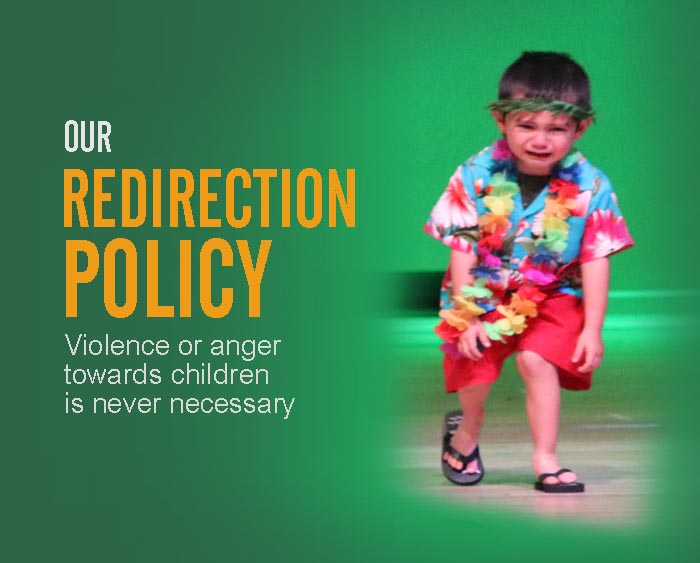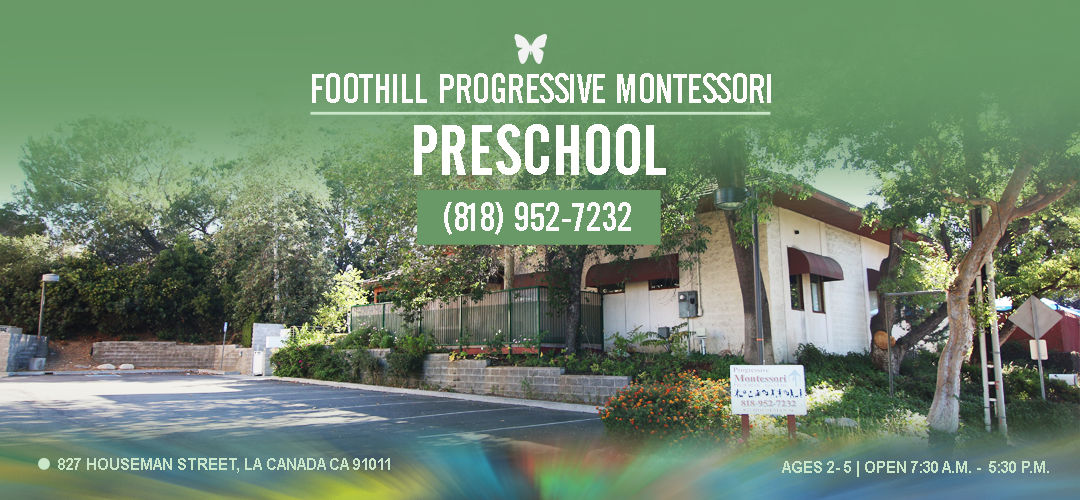REDIRECTION POLICY

One of our guiding principles is to reduce or prevent behavioral problems from happening before the fact, by observing the following
- Respecting and trusting children
- Listening to children
- Using positive approaches
- Encouraging and accepting expressions of feelings
- Carefully preparing the environment and giving choices
- Setting realistic limits
Giving plenty of advance notice when activities must end and carefully planning for transition times Being a model for the behaviors you would like to see increased in children. These guiding principles are then adopted into an intervention strategy. These include comment on behavior rather than the child, catching children being good, only making statements you are willing to back up and allowing children to learn the natural consequences of their behaviors. Once a behavioral problem has manifested itself we deal with the situation as follows:
1. Redirecting Time
When children are disruptive or out of control, they may need to be removed from the situation for a few minutes. One to five minutes depending on the child’s age. (No more than five!). This could be a particular chair or quiet spot as the time-out place. This is a calming device for the child and the teacher. When the time out is over, communication with the child is followed through with an activity.
2. Trade Off
When children scribble on the wall, we give them paper and crayons. When they race dangerously indoors, we take them outside for a game of chase. When they throw books at each other, we gather them for a story or organize a bean bag toss game.
3. Fix-Up
Another strategy we use is asking children to help fix up the results of their actions. If they throw or spill food, we calmly offer them a cloth to clean it up. If they break a toy, a suggestion is made that perhaps they can help fix it. If they make another child cry, have them help with the soothing and make it a learning experience.
As you can see we take an innovative approach to care for your child. No corporal punishment, caning or any form of physical punishment is administered at Angels Montessori Preschool. If all else fails, parents may be contacted at their workplace and asked to talk to your child to ascertain the situation and make every effort to calm their child. In some
Montessori & Behavior
Upon visiting a Montessori classroom for the first time, one might wonder what magic spell has been cast upon these young children making them so calm and self directed. Another person might look at that same class and be confused by the children'’s independence, wondering where'’s the discipline, these children just do as they please. Visitors commonly issue such comments as, '“I'’ve heard Montessori is too free and chaotic'” or '“I'’ve heard Montessori is too structured.'” It does not seem possible that these two extreme opposites can both be true. Montessori is, however, all in the eyes of the beholder.
This method or philosophy of education varies in interpretation from school to school, teacher to teacher, and parent to parent. There are certainly some Montessori classrooms that are very rigid and adult controlled, and there are also classroom that are disorderly and anything goes. Montessori when done well, however, is a beautiful blend and perfect balance of freedom and structure. The best Montessori teachers or facilitators understand that maintaining the delicate balance is one of the most challenging and rewarding aspects of their job. It is on that foundation of freedom and structure that the child builds discipline. Click Here to Read More
Behavior Issues
Got a Bossy Bessy on your hands? Tired of the tantrums? Wondering if time-out really works? Learn the how and the whys of your preschoolers' behavior as well as the most effective discipline techniques.
Punishment Issues
Why these two words are not interchangeable. Click Here To Find Out More

